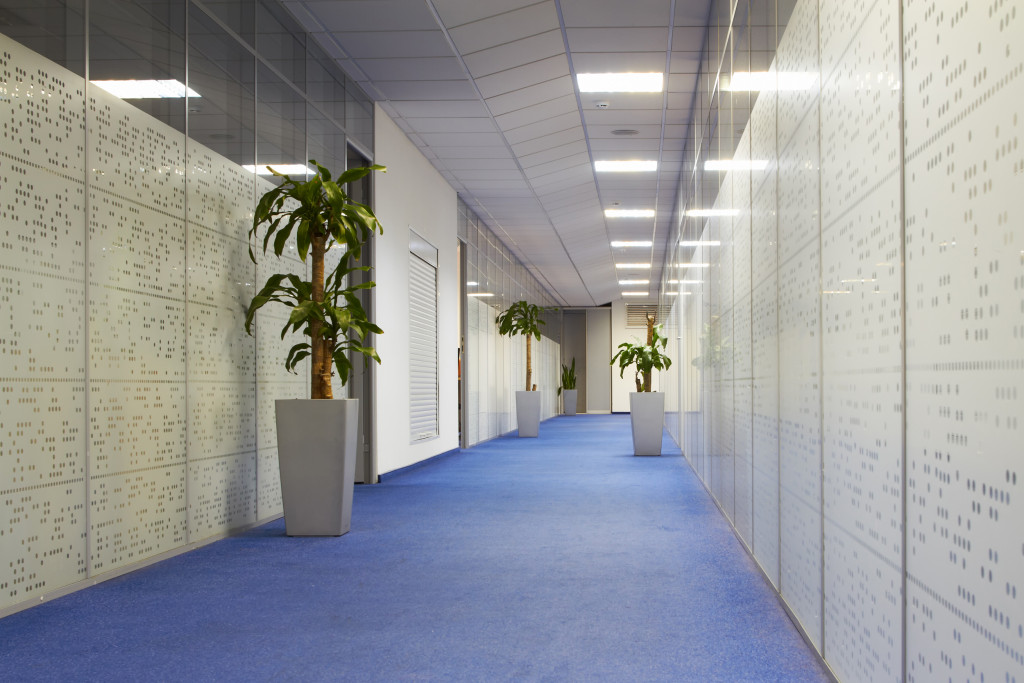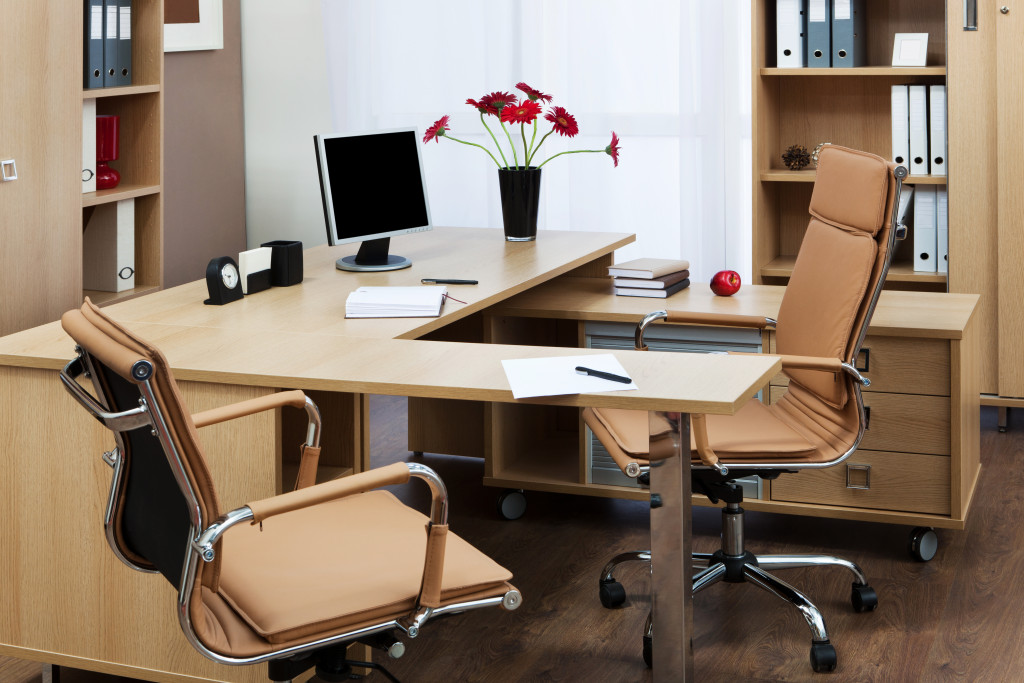- Design an office space well-suited to the staff’s current and future needs, including sufficient space, ergonomic furniture, natural light sources, and fresh air.
- Incorporate elements of nature into the office design, including plants, natural lighting, and water coolers.
- Utilize common areas such as break rooms or cafeterias for socialization which can boost job satisfaction and engagement levels.
- Emphasize ergonomics when designing an office by providing adjustable height chairs and desks, designated areas for stretching, and comfortable chairs with adjustable backrests.
Employees are the backbone of any workplace, and the productivity and success of businesses rely heavily on their performance. For this reason, it is essential that employers provide their employees with an office environment that supports their work and encourages them to do their best. A productive workspace should give employees the tools they need to achieve their goals and positively impact their performance.
It has been found that a well-designed and comfortable work environment can help to enhance motivation and increase overall productivity. According to a study conducted by Gallup, it was discovered that employees who feel engaged with their job are more likely to be more productive, leading to higher profitability for the company in question. Moreover, an inviting workplace can also improve morale among staff members, making them feel valued and appreciated, thereby boosting job satisfaction. This will create positive vibes in the office, further boosting staff members’ job satisfaction and engagement levels.
Several factors must be considered when designing an office space for optimal productivity. Here are a few of them.
Size and Layout
An office’s size and layout can significantly impact its employees’ overall productivity. A well-designed and optimally sized workspace can help to improve workflow, enable collaboration, facilitate clear communication, and foster team spirit. When designing an office, employers should consider their staff’s current and future needs to create a space that is functional and suitable for the job at hand.
Having enough space for all the workers is essential for size. Employers should allow each staff member to have a dedicated workstation where possible. This will enable them to concentrate on their tasks without feeling cramped or uncomfortable, which could lead to lower productivity levels. If there is not enough room for everyone to have their desk, communal workspaces can be just as effective as there are enough resources dedicated to them, such as computers, chairs, and tables.
The layout is also essential when it comes to creating a productive workspace. Studies show that employees work better when other people surround them than alone in a cubicle or confined space. In addition, employers should design offices that allow for easy collaboration between team members while still providing private areas where individuals can retreat if needed. Common areas such as break rooms or cafeterias should also be incorporated into the office design since these offer employees opportunities for socialization, which has been linked with higher job satisfaction levels and increased productivity.
Natural Elements

The office can sometimes feel like an artificial and isolated environment, especially when it is devoid of natural elements. To ensure employees don’t feel like living in an artificial environment, employers should consider incorporating nature into the office design to improve air quality and create a more comfortable setting. Here are a few elements to consider:
Indoor plants
Indoor plants have always been known to improve air quality and reduce employee stress levels. According to a Journal of Environmental Psychology study, adding natural elements such as plants to an office can make workers feel calmer and more relaxed.
Natural light
Natural lighting is also essential in improving productivity. Natural light can help regulate staff’s circadian rhythms, which encourages them to stay awake during the day and sleep better at night. It has also been found that exposure to sunlight increases productivity levels due to its mood-boosting capabilities. However, too much sunlight can be distracting to employees. Fortunately, you can install commercial window films to limit the light entering the office while allowing employees to benefit from its mood-boosting capabilities.
Fresh Air
Ventilation is also essential since it helps regulate the office’s temperature and humidity levels. This ensures that employees are comfortable at all times and can focus on their work without feeling too hot or stuffy. It is also recommended to open windows regularly for a few minutes, so fresh air can enter the workspace and give everyone a much-needed break from stagnant air.
Water Accessibility
Water is vital to people’s survival but can also be part of their comfort. As a result, employers should ensure their offices have water coolers or other water sources easily accessible to their staff. This will help workers stay hydrated, reducing fatigue and improving focus levels.
Ergonomic Furniture

Finally, ergonomic furniture should be a priority when designing an office. Having adequate support and adjustable furniture can help reduce back pain and fatigue while improving employee posture levels. This will lead to improved concentration levels and higher productivity.
Ergonomics will also be vital for employee health. There will need to be designated areas for stretching and other forms of exercise to keep people from becoming stiff. Additionally, employers should provide comfortable chairs with adjustable height options supporting employees’ backs and arms. They should also install adjustable desks for employees who prefer to stand while working.
Final Thoughts
Employers should consider all of these elements when creating a productive office space. Providing the right tools and environment will help employees feel comfortable and focused on their work, resulting in higher job satisfaction and improved performance.


